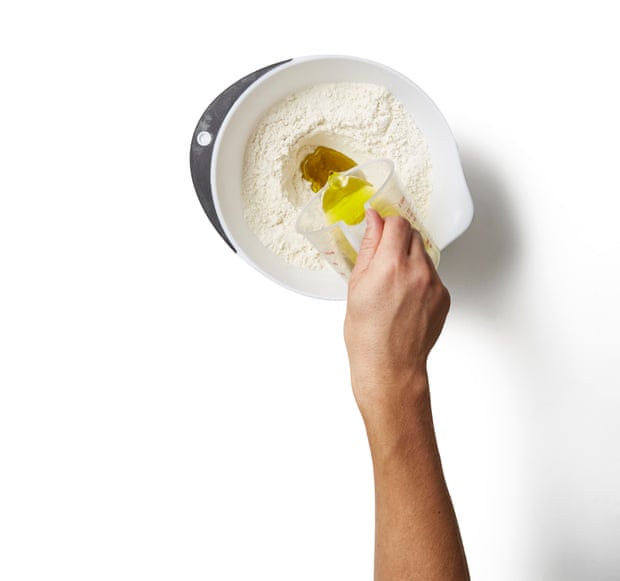
I have vivid memories of my first encounters with focaccia. It popped up in British supermarkets in the late 1990s, oozing delicious olive oil and usually stuffed with other very trendy things such as sun-dried tomato and black olives. These days, I realise those dry, cakey versions were but pale imitations of this Ligurian classic, which is best enjoyed fresh from your own oven.
Prep 25 min
Prove 2 hr+
Cook 25 min
Makes 1 large loaf
375g strong white bread flour
375g “00” flour
1 tbsp fine sea salt
8g active dry yeast
130ml extra-virgin olive oil, plus extra to grease
2 tbsp coarse semolina or cornmeal (optional)
1 tsp salt flakes
1 Combine the dry elements
You can make this with white bread flour alone, or with plain flour rather than the tipo 00 (often sold as “pasta flour”), but I think a combination gives the right balance of chewy crust and tender crumb. Whatever you go for, put the flours in a large bowl along with the salt and yeast, then whisk to combine.
2 Add the liquids
Make a well in the middle of the flour, and pour in 100ml olive oil and 300ml tepid water.
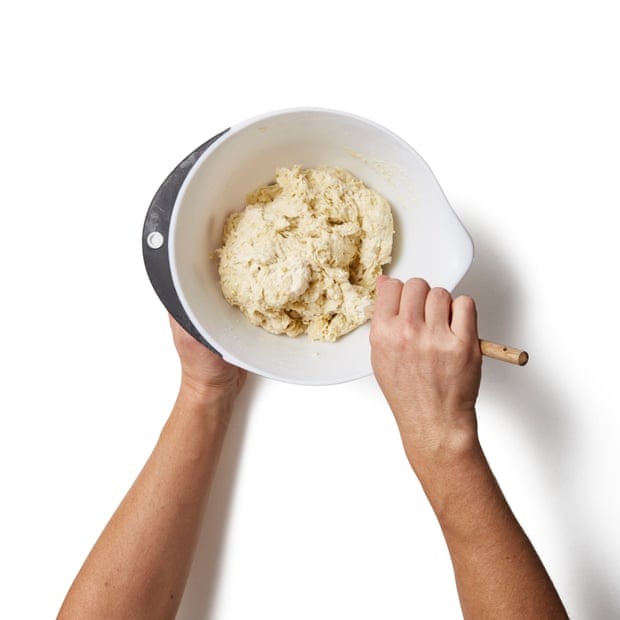
Stir this into the dry ingredients, then add just enough additional water (I used about 100ml) until you have a very soft, but not quite sticky dough; if you overdo it, redress the balance with a little more flour.
3 Knead the dough until smooth and elastic
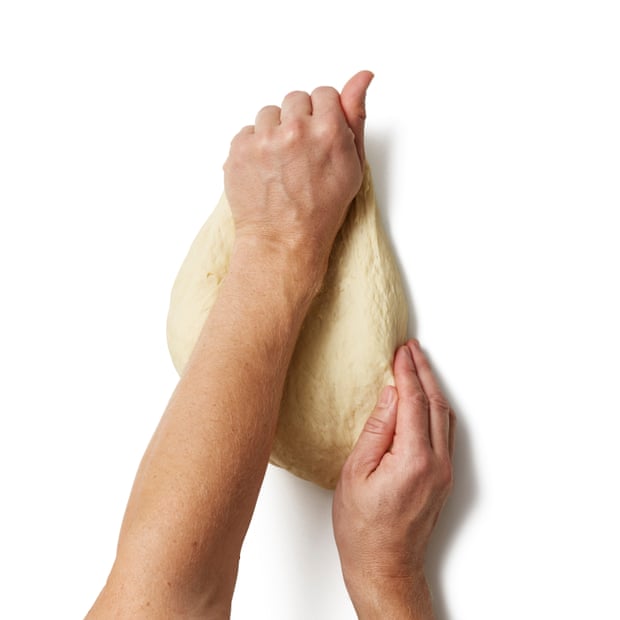
This is easiest done in a food mixer fitted with a dough hook, and will take about seven minutes on a medium-slow speed, but you can also do it by hand on a lightly greased work surface, which should take 10-12 minutes.
4 Leave it to rise
Lightly oil a baking sheet, and put the dough on it.
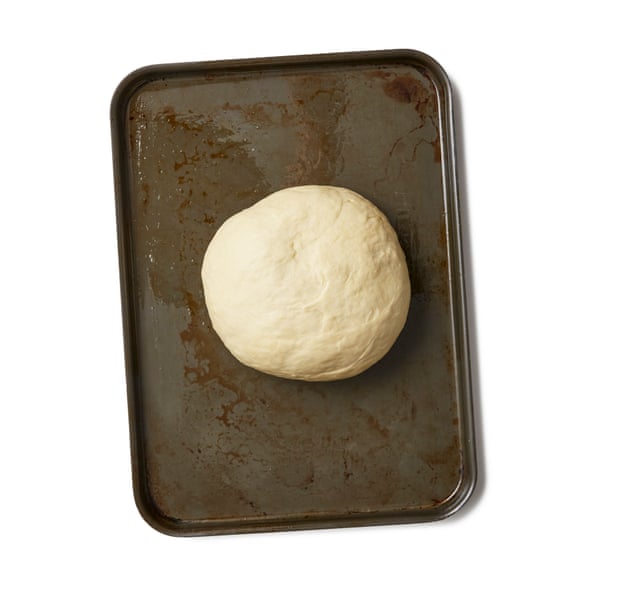
Leave to rise in a draught-free, relatively warm place until roughly doubled in size; this will probably take between 60–90 minutes, but both yeast and kitchens differ, so keep an eye on the size, rather than the time.
5 Knock it back, then knead
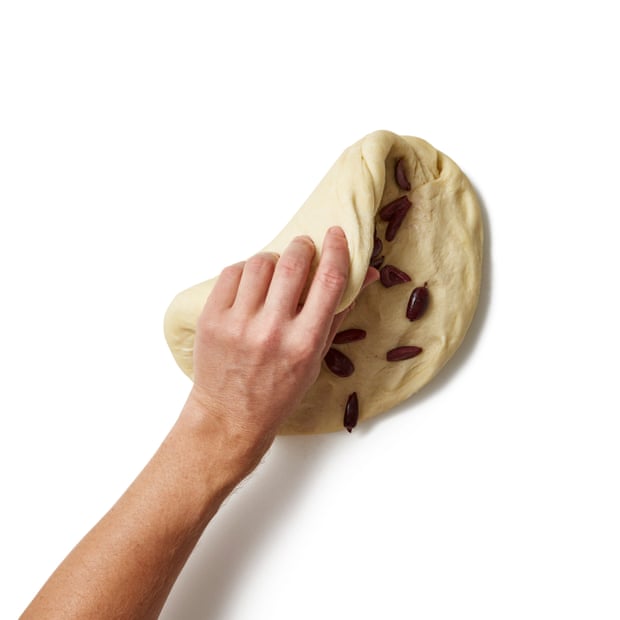
Tip the dough on to a work surface and knock the air out of it. If you want to incorporate other ingredients – for instance, chopped sun-dried tomatoes, olives, cheese or herbs – now is the time to knead them in.
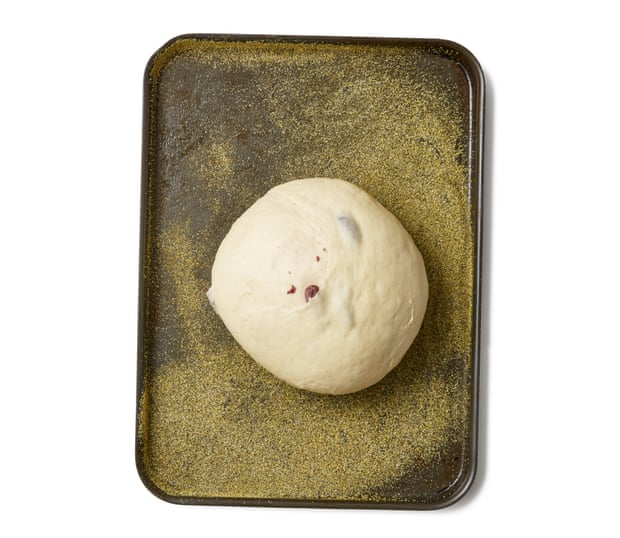
Lightly dust the baking sheet with semolina, if using; though not mandatory, it will give your focaccia a delicious crunch.
6 Oil, then leave to prove again
Put the dough back in the middle of the baking tray and use your fingers to press it nearly, but not quite, into the edges of the tray.
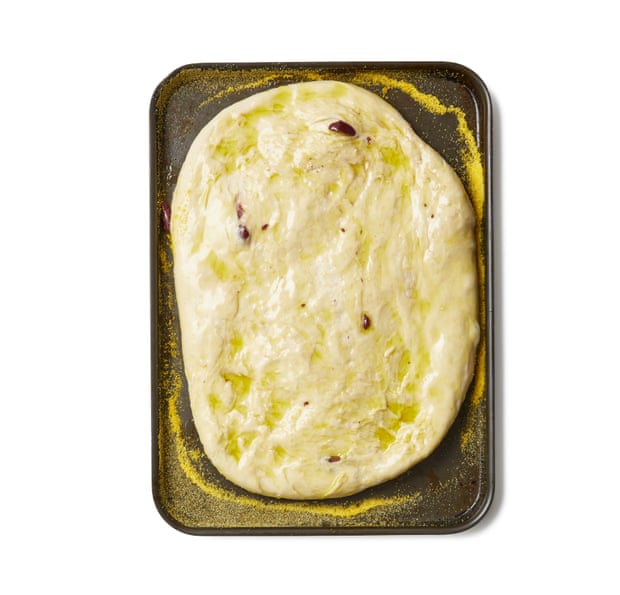
Brush with some more olive oil, and leave to rise in a draught-free place until doubled in size again; it should be slightly quicker this time.
7 Heat the oven
Once the second rise is done, heat the oven to 220C/200C fan/425F/gas 8 and put a roasting tin in the bottom of the oven to heat up. Boil a kettle of water to pour into the tin when you put the bread in the oven (the resulting steam from underneath it will give the focaccia a softer crust and bigger rise).
8 Apply the glaze and toppings
Whisk the remaining two tablespoons of olive oil with two tablespoons of water until well combined. Poke deep dimples across the surface of the bread with your fingertips. Pour the oil and water evenly over the top and scatter the whole thing with flakes of salt (and dried herbs, if you like).
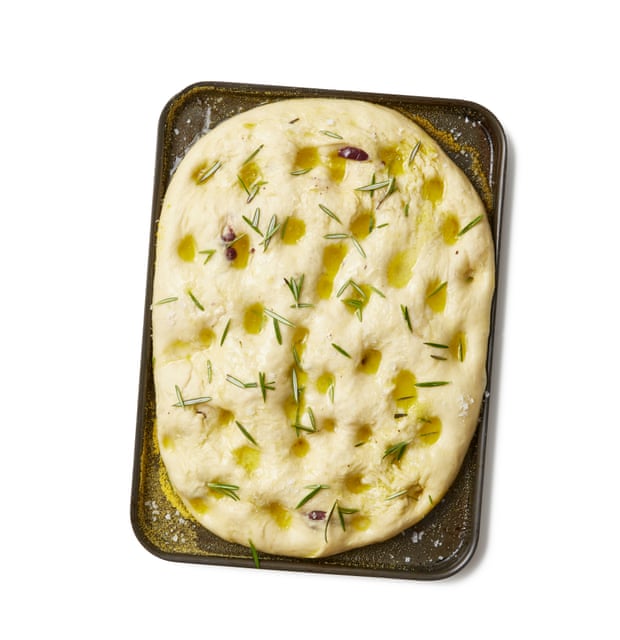
9 Bake and enjoy
Put the bread in the middle of the oven and quickly pour the hot water into the tin at the bottom before you shut the door.
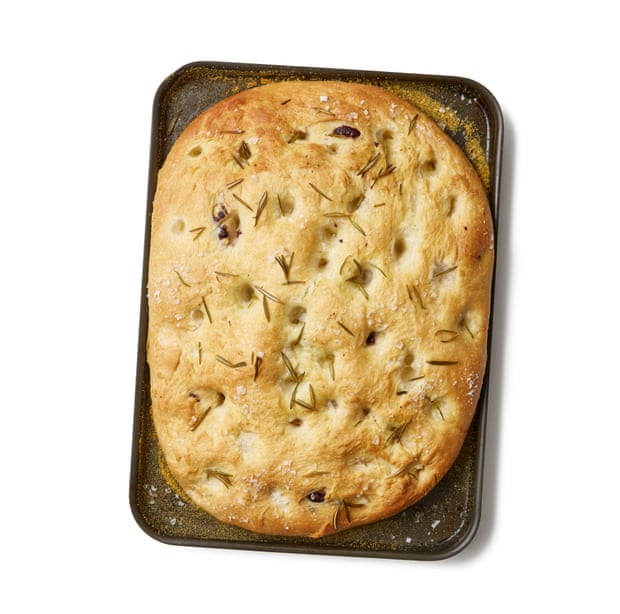
Bake for about 20-25 minutes, or until richly golden on top – check it regularly towards the end, because it can burn easily. Focaccia is best enjoyed warm.



